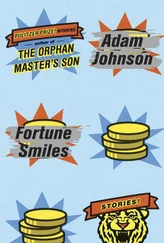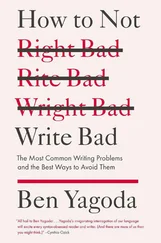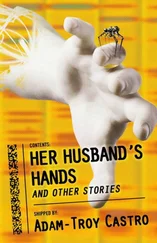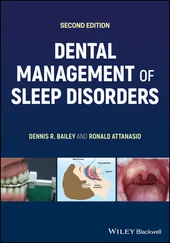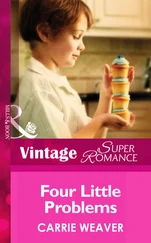…………………….
Considering the divergent paths their lives had taken, a son whose father had bequeathed to him his extensive collection of books was not surprised to find that his father’s library did not overlap whatsoever with his own. What he owned his father did not, and what his father owned he did not. He was not surprised , but upon shelving his father’s books beside his own he was still moved to tears by the sight of these nonoverlapping libraries, a stark symbol of the gulf between them.
Some years later, though, while absentmindedly scanning his shelves, he noticed that he had two copies of the same slim black book, a book he only faintly remembered reading, the memoirs and maxims of a nineteenth-century German polymath. One copy had his own name scribbled on the inside cover and the other had his father’s name scribbled in the very same place. Sensing that he had stumbled upon some secret subterranean channel connecting his father’s mind to his own, which would render all of the apparent differences between them superficial and inconsequential, he snapped the spines of both books and lay them flat on his desk, open to the same page.
At first the annotations looked quite dissimilar. Then he realized, rifling rapidly through the pages, that they were absolutely, flawlessly dissimilar. What his father had underlined he had not, and what he’d underlined his father had not. Where his father in the margins had put a single exclamation point, he had put a single question mark, and vice versa, and where his father had put two exclamation points he’d put two questions marks, and vice versa. Where one wrote Yes , the other wrote What , where one wrote No the other wrote Self-evidently true , where the first wrote Huh? , the second wrote Sounds like Socrates (in the Apology) , and where the second wrote Huh? , the first wrote Sounds like Socrates (in the Apology ). Wherever the father had written cf. Weber’s Protestant Ethic , the son had written Tendentious , and the father’s Tendentious was likewise associated in every instance with the son’s cf. Weber’s Protestant Ethic . Wherever the son had put Very clever little argument! , his father had written This sort of thinking led directly to the Holocaust and, needless to say, the arguments that the father considered very clever were precisely those that the son believed led directly to the Holocaust.
He could, of course, have seen these disagreements in a negative light, as yet another symbol — even the definitive symbol — of the infinite void that yawned between them. But, as it happens, the son was powerfully moved by the comprehensiveness, the exactitude, the perfection of the disagreement here with his father. In fact, he had never felt closer to him.
…………………….
The inventor Shimura’s much-anticipated robotic father — which was designed to provide orphanages with a paternal presence, albeit a humanoid one — has turned out to be a total disaster. Mostly he ignores the orphans. Every fifteen minutes he raises one of his robotic arms and violently hushes the entire orphanage. He consumes the biographies of business titans, which, according to the manual, are actually scanned via the eyes and downloaded onto his massive hard drive. Shimura seems baffled by the negative response to his robot, which has led to speculation about his childhood.
…………………….
Until Thursday, the Hirsch Company had produced its artificial food dye — used mainly to color sausage casings — continuously since 1868, when it was synthesized by the Breslau-born chemist Felix Hirsch. Hirsch got fantastically rich off the chemical. On his deathbed he summoned his eldest son, who was about to inherit both the fortune and the company, and confessed, in an agonized tone which his son had never heard before, that the synthetic dye was poisonous to human beings. In large quantities it shut down major organs, brought on huge tumors, caused the heart to rupture.
His son was struck dumb.
“Say something,” his father begged.
The son murmured, “How long have you known?”
All along, Hirsch admitted. From that winter morning in 1868 when he had first synthesized the chemical. He was weak, he said. He was corrupt. He wanted money; he wanted his family to have money. Until this moment, he had not told a soul. But his son was free to do with the knowledge as he pleased. “Expose me,” whispered Felix Hirsch. “Repudiate me.” His last words were: “Renounce me.”
But the son decided to say nothing. His father remained a chemical hero, the Hirsch Company kept churning out gallon upon gallon of the poisonous orange dye, and the Hirsch family continued to live in luxury. In fact, the son cornered the global market for sausage casing coloration, driving out of business the organic, immensely salubrious dyes manufactured by his competitors. But on his deathbed, wracked with guilt, he summoned his son, the new chairman, and told him the family dye killed organs, caused tumors, and exploded hearts.
His son was aghast. “How long have you known?”
“All along.”
“It explodes hearts ?”
“Yes,” said the father. “Tell the world.”
But the son told no one. His grandfather remained a chemical hero, his father was considered a business legend, casings around the globe continued to be colored by Hirsch dyes, and the family fortune grew without bound. And as he died he mentioned to his son the organ-killing, tumor-causing, heart-exploding properties of the family dye and encouraged him to come clean.
A dynastic pattern had been established, and whenever such a pattern has been established — son inherits sausage casing colorant, son learns truth about lethal nature of casing colorant, son nevertheless exploits to the fullest the financial potential of colorant, son divulges truth about colorant to his own son and moments before death counsels him to confess the family’s crimes to the public — it is actually very hard to break. So it happened that the Hirsch family continued making their noxious dye for nearly 150 years, causing tens of millions of organs to fail, tens of millions of hearts to explode, and tens of millions of tumors to grow to unbelievable sizes. If the dye consumer did not die of organ failure or heart explosion, his big, abundant tumors would impinge on the few organs that did survive and bring about the most gruesome death imaginable. Yet so many other chemicals caused similar problems in the period between 1868 and now that these deaths were never traced back to the sausage casings or from the sausage casings to the dye. Till last week, only the Hirsch fathers and sons knew the truth. They inherited their death toll reluctantly, they invested their death toll prudently, they watched their death toll grow by several percentage points a year, and in the end they left their death toll and all of its ethical considerations to their sons.
Last week, of course, saw the publication of the first study to suggest that Orange 6, the colorant in certain sausage casings, is toxic. Researchers fed a large quantity of these casings to twenty rats, all of whom died, twenty cats, all of whom died, and twenty dogs, all of whom died instantly. Then three hundred white mice died after ingesting the casings. In a final round of testing, eleven monkeys were fed an extract of Orange 6 mixed with milk. The monkeys died.
The public outcry was immediate and intense. Yet the current head of the Hirsch Company, Adam Hirsch, stood by his family’s product. The dye, he insisted, is absolutely safe for human consumption. To prove it, he pledged to eat one thousand sausage casings on a platform in the center of the Hirsch Family Atrium, home, as it happens, to one of the finest bonsai collections in the Western hemisphere.
Читать дальше

